The tiny house movement, which advocates for downsized living spaces as a means to achieve sustainability, affordability, and a simpler lifestyle, has gained popularity in recent years. As the environmental and economic benefits of tiny homes become more apparent, there is growing interest in understanding how a large-scale shift to building tiny homes might impact the resources we use. This article will explore potential impacts on energy, materials, land, and water, and the challenges the movement may face as it grows.
The number of people who could benefit if America embraced the idea of tiny homes depends on various factors, including affordability, housing shortages, and environmental sustainability. Unfortunately, There’s no political will to solve the affordable housing issue or widespread acceptance within our population of the idea of tiny homes. That is sad because millions of people could benefit greatly.
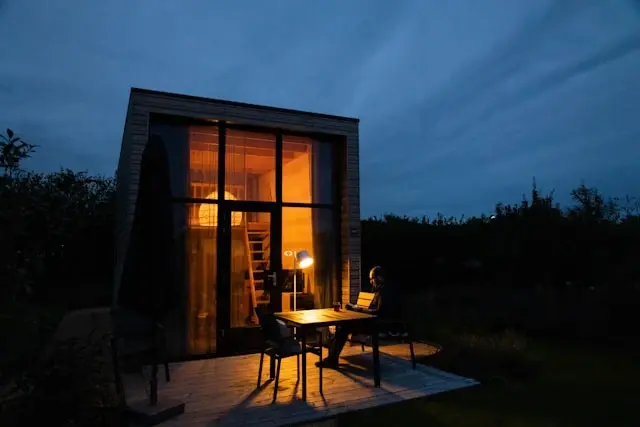
Table of Contents
- 1. Lower Energy Consumption
- 2. Reduced Need for Construction Materials
- 3. Efficient Land Use
- 4. Water Use Reduction
- 5. Sustainability and Resource Use
- 6. Challenges to Scaling the Tiny House Movement
- 7. Affordable Housing:
- 8. Housing Shortages:
- 9. Environmental Benefits:
- 10. Aging Population:
- Estimation:
- Total Potential:
- Conclusion
1. Lower Energy Consumption
One of the most significant benefits of tiny homes is their reduced energy consumption. Since tiny homes typically range from 100 to 400 square feet, they require far less energy for heating, cooling, and electricity compared to traditional homes. Studies suggest that tiny homes can reduce energy consumption by as much as 45% to 70% depending on the location, climate, and efficiency of the building materials and systems used.
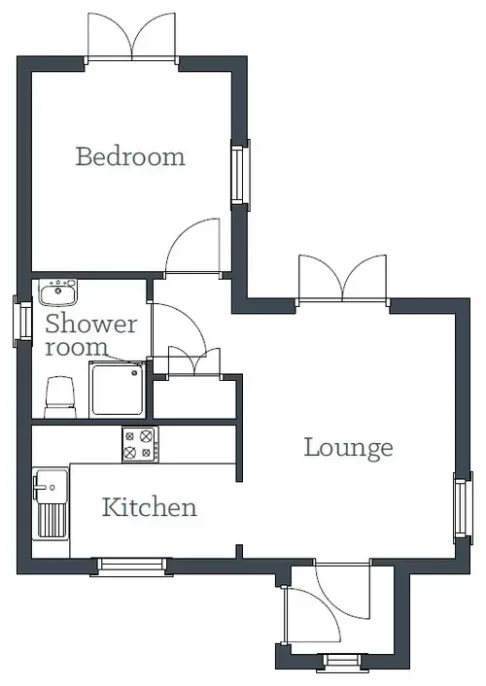
Many tiny home dwellers also adopt energy-efficient appliances and renewable energy sources, such as solar panels, to power their homes. These measures further reduce the reliance on traditional energy grids. A report by the American Council for an Energy-Efficient Economy (ACEEE) notes that smaller, energy-efficient homes use less energy and could make a significant difference in reducing greenhouse gas emissions if adopted more widely.
2. Reduced Need for Construction Materials
Building tiny homes requires a fraction of the materials used in traditional homes, significantly reducing the demand for resources such as wood, concrete, steel, and other building materials. Traditional homes in the U.S. have an average size of over 2,600 square feet, meaning they consume a vast amount of construction materials. In contrast, a tiny home, being just a fraction of that size, uses approximately 7% of the materials needed for a full-sized home.
This dramatic reduction in material use could lessen the pressure on natural resources, especially those that are non-renewable or take a long time to replenish. Fewer building materials also mean reduced emissions associated with the manufacturing, transportation, and installation of those materials.
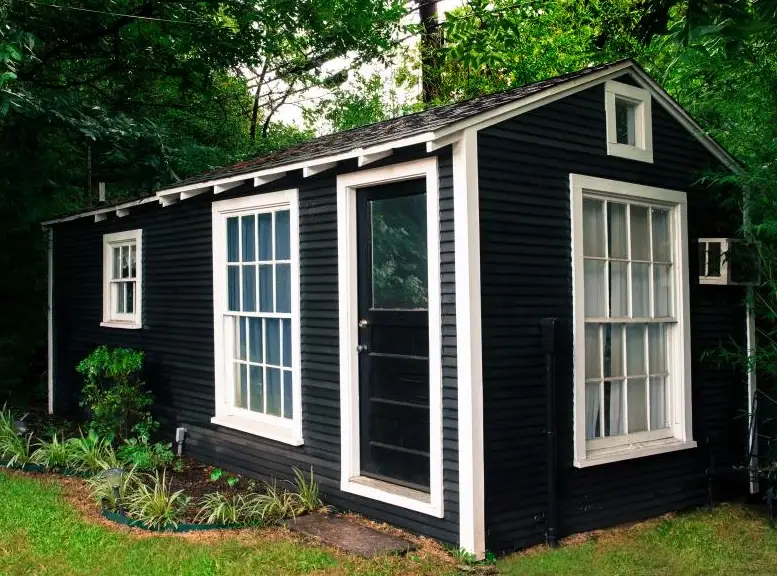
In addition to using fewer resources, many tiny homes incorporate recycled or sustainably sourced materials, which further decreases the environmental impact of construction. Bamboo, reclaimed wood, and recycled metal are popular materials in the tiny home community.
3. Efficient Land Use
As the world’s population continues to grow, the efficient use of land is becoming increasingly important. In urban areas, land scarcity is driving up property prices and making homeownership unattainable for many. Tiny homes, by requiring less land than traditional homes, present an opportunity to develop denser communities that use land more efficiently.
For example, a single plot of land that might typically be used for one large home could house multiple tiny homes instead. This approach can help reduce urban sprawl and preserve more green spaces or agricultural lands that would otherwise be lost to development.
This is particularly important in regions where agricultural land and natural habitats are under pressure due to expanding cities. Densely populated tiny home communities could reduce the need for expanding cities outward and help conserve natural environments.
4. Water Use Reduction
Water use is another area where tiny homes can outperform their larger counterparts. With smaller homes, there is generally less space for water-hungry appliances like dishwashers, large washing machines, or extensive plumbing systems. Many tiny homes also incorporate eco-friendly water systems such as composting toilets, low-flow fixtures, and rainwater harvesting systems.
Some reports suggest that tiny homes can reduce water usage by as much as 20-40% compared to traditional homes. This reduction in water demand is especially significant in areas facing water shortages or droughts. In some tiny homes, greywater systems are also employed to recycle water from sinks and showers for landscaping or toilet flushing.
Additionally, composting toilets, which are popular in off-grid tiny homes, drastically reduce water use compared to conventional flushing toilets. On a larger scale, this reduction in water use could lead to less strain on municipal water supplies and wastewater treatment facilities.
5. Sustainability and Resource Use
Tiny homes are often built with sustainability in mind. In addition to reducing material and energy use, they can be designed to maximize the use of eco-friendly, renewable resources. Solar panels, rainwater harvesting, and passive heating and cooling techniques can be easily incorporated into tiny homes, further reducing their environmental footprint.
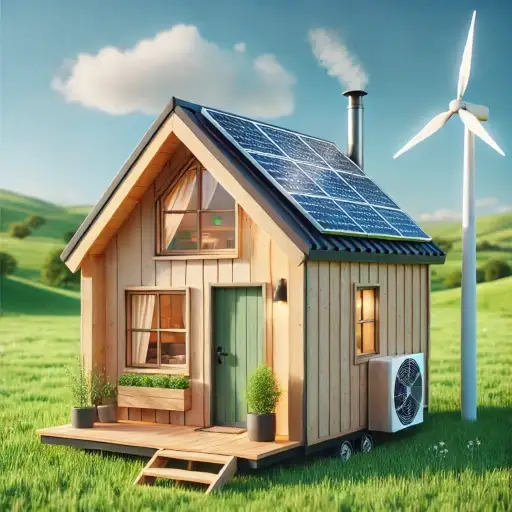
Moreover, many tiny homes are built on trailers, making them mobile. This mobility allows tiny homeowners to relocate easily, reducing the need for new construction and demolition, which consume additional resources. Tiny homes can also be integrated into sustainable communities where residents share common areas and amenities, reducing overall resource consumption.
Some proponents of tiny homes argue that, with the right policy support, they could become a key component of the broader movement toward sustainable living and resource conservation. For instance, using locally sourced, renewable materials in the construction of tiny homes could reduce the carbon footprint even further.
6. Challenges to Scaling the Tiny House Movement
While the tiny house movement presents several opportunities to reduce resource consumption, there are challenges to scaling it up. Zoning laws, building codes, and infrastructure are often designed with traditional homes in mind, creating obstacles for those who wish to build or live in tiny homes.
Many municipalities have minimum size requirements for dwellings, making it difficult to legally place tiny homes in residential areas. Moreover, in some regions, tiny homes on wheels are classified as recreational vehicles (RVs), which limits their use as permanent residences.
However, cities are starting to adapt to the growing interest in tiny homes. Some local governments have created tiny home communities or revised zoning regulations to allow for the development of smaller dwellings.
Additionally, while tiny homes reduce overall resource consumption, the materials used in some cases—such as for off-grid systems—may still rely on industrial processes that have environmental costs. For example, solar panels, batteries for energy storage, and advanced building materials have their supply chain challenges, including the extraction of rare materials and energy-intensive manufacturing.
The number of people who could benefit if America embraced the idea of tiny homes depends on various factors, including affordability, housing shortages, and environmental sustainability. Here’s an estimation based on available data:
7. Affordable Housing:
- Homeless population: There are over 580,000 homeless people in the U.S. as of 2020. Building affordable tiny homes could provide a stable housing option for a significant portion of this population.
- Low-income households: According to the National Low-Income Housing Coalition, there is a shortage of 7.3 million affordable rental homes for low-income renters. Tiny homes could offer a cheap alternative for many families currently struggling with rent.
8. Housing Shortages:
- The U.S. faces a housing shortage of about 3.8 million units. By incorporating tiny homes, this shortage could be alleviated, especially in high-density urban areas where space is at a premium.
9. Environmental Benefits:
- Sustainable living: People interested in reducing their environmental footprint—such as those in urban areas concerned about climate change—could benefit from tiny homes. With energy-efficient designs and smaller resource consumption, millions of environmentally conscious Americans may choose tiny homes for a more sustainable lifestyle.
10. Aging Population:
- As of 2023, over 16% of the U.S. population is 65 years or older. Many retirees are looking to downsize to smaller, more manageable homes. Tiny homes could provide a comfortable, affordable option for aging Americans, many of whom are living on fixed incomes.
Estimation:
If tiny homes became widely accepted, potentially tens of millions of people across various demographics could benefit. For instance:
- If 20% of the 3.8 million housing shortage is addressed with tiny homes, that’s 760,000 families.
- If just 10% of low-income renters could afford a tiny home, around 730,000 households would benefit.
- If even 5% of seniors opted for tiny homes, that’s over 2.5 million people.
Total Potential:
Millions of Americans—from the homeless and low-income households to seniors and eco-conscious individuals—could significantly benefit from the widespread acceptance and construction of tiny homes. A conservative estimate suggests that 4-5 million people could immediately benefit from the availability of small homes, with the potential for many more as the movement grows.
Conclusion
The tiny house movement offers a glimpse into a more sustainable future, where less is more. By using fewer resources—energy, materials, land, and water—tiny homes could significantly reduce the environmental impact of housing. However, for the movement to achieve its full potential, there needs to be greater policy support, adjustments to zoning laws, and consideration of the broader supply chain impacts of materials used in tiny homes.
The growing interest in tiny homes reflects a desire to live more sustainably, but the movement is still evolving. As more research and data become available, we may see more detailed projections on the long-term impacts of widespread tiny home construction. If done correctly, building more tiny homes could represent a major shift toward resource efficiency and environmental responsibility.
References Materials:
- American Council for an Energy-Efficient Economy (ACEEE). “Energy Efficiency and Housing.” https://www.aceee.org
- U.S. Census Bureau. “New Residential Construction.” https://www.census.gov/construction/nrs/
- Tiny Home Builders. “Tiny Home Resource Use and Sustainability.” https://www.tinyhomebuilders.com
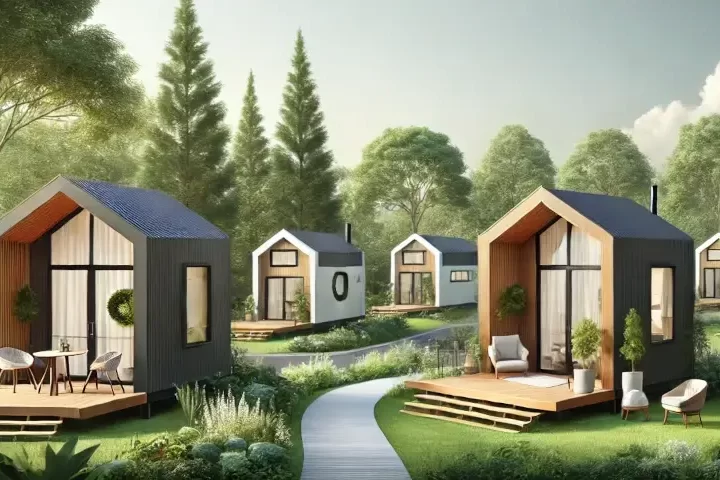
I visited a lot of website but I conceive this one has got something extra in it in it
Hello to all, how is the whole thing, I think every one is
getting more from this web site, and your views are pleasant in favor of new people.
Hi there, You have done an incredible job. I will certainly digg
it and personally suggest to my friends. I am confident they’ll
be benefited from this website.
Thank You 🙂 I appreciate the positive feedback. I do put a great deal of research into each article. However, the tiny home movement has uphill battles due to the mindset of owning a home or real estate as means to wealth building ( capitalist mindset ). For a large number of people though these small efficient dwellings make perfect sense. Additionally, it’s just a really cool concept.
I like the efforts you have put in this, thanks for all the great content.